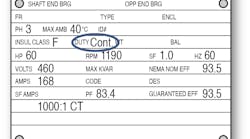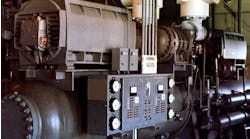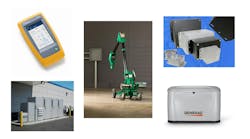Before putting an AC machine into service, make sure its duty rating matches the application requirements. Otherwise, there’s a good chance excessive heat will degrade the machine’s windings.
Applications are not all created equal. For example, a crane motor doesn’t require the same duty rating as a punch press motor of equal horsepower that runs continuously. Likewise, a chop saw motor wouldn’t need the same duty rating as a pump motor that operates 24-7-365. If the motor must operate at variable speeds other than its nameplate base speed, its turndown ratio is another consideration.
NEMA Std. MG-1-1.40 and IEC Std. 60034-1, Clause 4 describe the duty classifications for the respective standards. Let’s look at the NEMA ratings first.
NEMA duty classifications
Continuous rating. NEMA MG-1-1.40.1 covers machines with a continuous rating. These are essentially motors that can sustain a given load indefinitely.
Short-time rating. NEMA MG-1-1.40.2 applies to machines that have a short-time rating. Effectively, this is the amount of time the machine can operate within its temperature rise from an ambient temperature start. In practice, it means the motor must remain de-energized long enough to return to within 9°F (5°C) of ambient temperature before starting again. We know this doesn’t always happen in applications, so it’s important to select an appropriate machine.
Typically, NEMA machines will have duty ratings like those in Table 1. The machine manufacturer determines which rating is applicable given the machine’s design and performance testing results. On a NEMA motor nameplate, the designation will be next to “duty” (see Fig. 1).
IEC duty types with “S” ratings
Machines that conform to IEC 60034-1, Clause 4 have a different duty rating system that goes from S1 to S10. The most common rating is S1, which means the motor is rated for continuous operation at nameplate load and speed. S1 is typically the default rating if no rating is specified when ordering equipment.
The S2 classification is the equivalent of the short-time ratings of NEMA MG 1, 1.40.2. If the motor needs to operate at varying loads and speeds as it might on a conveyor, consider an S9 duty motor instead.
See Table 2 for all the IEC 60034-1, Clause 4 duty ratings. Figure 2 shows where the duty rating is located on an IEC nameplate.
Consider the turndown ratio
Besides the appropriate duty rating, an AC motor that must operate at variable speeds other than what is listed on the nameplate should have a turndown ratio that meets that criterion. The turndown ratio indicates the slowest speed at which the motor can operate for a significant time without sustaining thermal damage.
The turndown ratio is an important consideration in variable-speed applications that have an integral fan on the shaft for cooling. When the shaft turns slower than the rated speed, the volume of cooling air circulating within the machine will decrease. Depending on machine loading, this could impact cooling for the stator, rotor, and bearings, causing an increase in temperature rise and heightening the risk of component failure.
Turndown ratios for NEMA machines are listed on the nameplate for constant torque (CT), variable torque (VT), or both. For IEC machines, it’s best to check the motor manufacturer’s specifications to determine the turndown ratios for its products. See Table 3 for examples of common turndown ratios for AC motors.
To calculate the turndown ratio for an application, use Equation 1. For example, if the application requires constant torque and speed control at a speed range of 100 rpm to 1,780 rpm, on a 1,780 rpm, 4-pole motor, the turndown ratio must be at least 17.8:1 (1,780 rpm ÷ 100 rpm). In this instance, a turndown ratio of at least 20:1 CT is recommended.
Questions to consider
Once you have the above information, how do you apply it to purchase a motor with the correct duty rating and turndown ratio? Ask plenty of questions about the application.
Here are a few examples:
- Will this motor be operated continuously? If not, how long will it be operating under load?
- Will this motor be de-energized between the periodic operation? If so, how long before the next start?
- Will this motor be started and stopped frequently?
- Will the speed need to be varied in service from the nameplate rating? If so, by how much?
- Will the motor be operated by a drive system?
These are all great questions to help you pick the right duty rating and turndown ratio for the machine.
But the most important point to remember is that operating a motor outside its nameplated duty parameters can cause its winding temperature to exceed what the insulation system will allow. This can shorten the winding life due to thermal degradation because every 18°F (10°C) increase in winding temperature decreases winding life by half. If plans call for operating a motor at less than its rated speed, partner with the motor manufacturer or a trusted service center to determine the correct turndown ratio and duty rating (e.g., S8 – S10).
Matthew Conville, P.E. is a technical support specialist at EASA, Inc., St. Louis, www.easa.com. EASA is an international trade association of more than 1,700 firms in nearly 70 countries that sell and service electromechanical apparatus.









